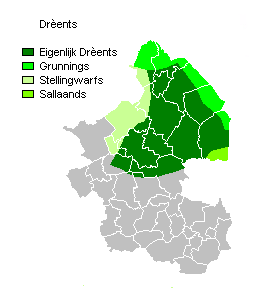This article needs additional citations for verification .(September 2014) (Learn how and when to remove this template message) |
 | |
| Other names | Drents Heideschaap |
|---|---|
| Country of origin | Netherlands |
| Use | vegetation management |
| Traits | |
| Weight |
|
| Height |
|
| Horn status | Rams are horned and ewes can have horns or are polled (hornless) |
| |
The Drenthe Heath Sheep (Drents Heideschaap, Dutch) is a domesticated breed of sheep originating in the Netherlands. It is raised primarily for vegetation management. [1]
A breed is a specific group of domestic animals having homogeneous appearance (phenotype), homogeneous behavior, and/or other characteristics that distinguish it from other organisms of the same species. In literature, there exist several slightly deviating definitions. Breeds are formed through genetic isolation and either natural adaptation to the environment or selective breeding, or a combination of the two. Despite the centrality of the idea of "breeds" to animal husbandry and agriculture, no single, scientifically accepted definition of the term exists. It was shown by set-theoretic means that for the term breed an infinite number of different definitions, which more or less meet the common requirements found in literature, can be given. A breed is therefore not an objective or biologically verifiable classification but is instead a term of art amongst groups of breeders who share a consensus around what qualities make some members of a given species members of a nameable subset.

Domestic sheep are quadrupedal, ruminant mammals typically kept as livestock. Like most ruminants, sheep are members of the order Artiodactyla, the even-toed ungulates. Although the name sheep applies to many species in the genus Ovis, in everyday usage it almost always refers to Ovis aries. Numbering a little over one billion, domestic sheep are also the most numerous species of sheep. An adult female sheep is referred to as a ewe, an intact male as a ram or occasionally a tup, a castrated male as a wether, and a younger sheep as a lamb.

The Netherlands, informally Holland, is a country in Northwestern Europe with some overseas territories in the Caribbean. In Europe, it consists of 12 provinces that border Germany to the east, Belgium to the south, and the North Sea to the northwest, with maritime borders in the North Sea with those countries and the United Kingdom. Together with three island territories in the Caribbean Sea—Bonaire, Sint Eustatius and Saba—it forms a constituent country of the Kingdom of the Netherlands. The official language is Dutch, but a secondary official language in the province of Friesland is West Frisian. In the northern parts of the country, Low German is also spoken.
It is said to be the oldest surviving breed of sheep in Europe. Approx. 4000BCE they were introduced to Drenthe. The breed probably came with settlers from France. [2] [ citation needed ]















